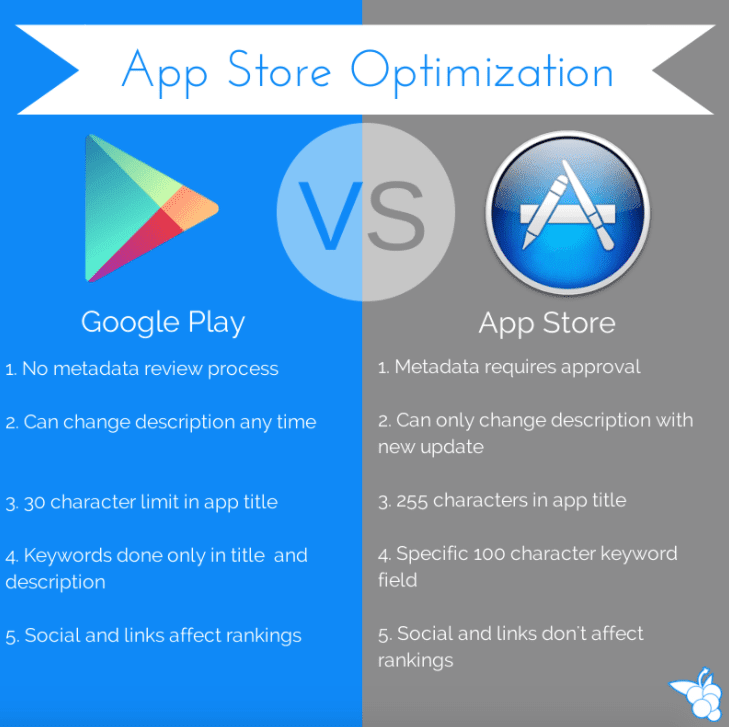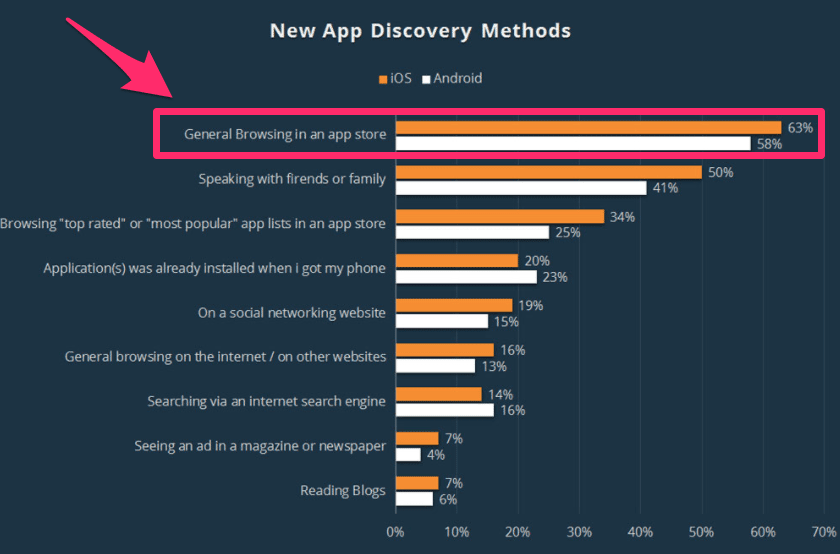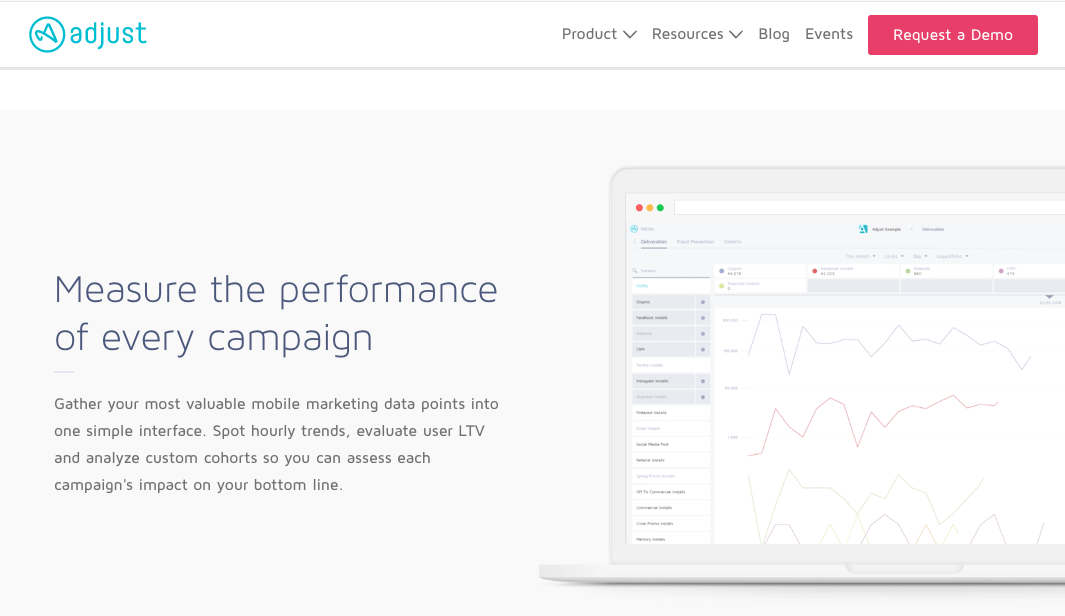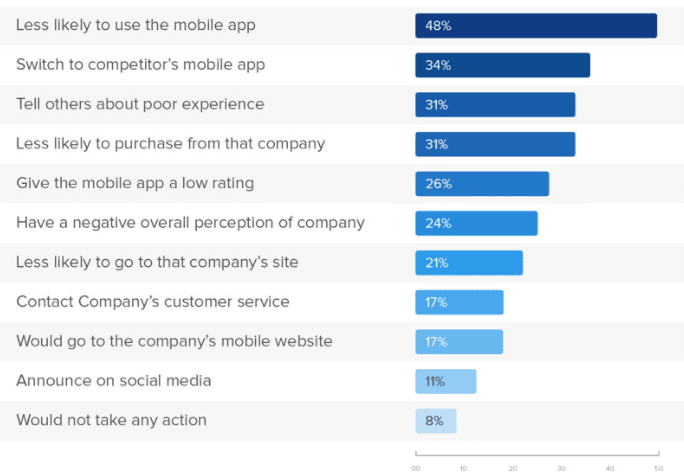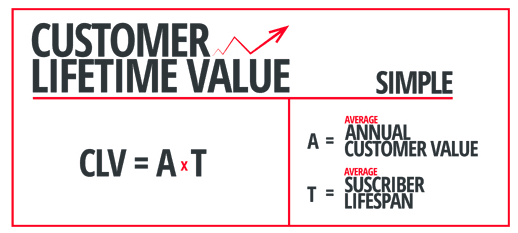25 Actionable Mobile App Metrics You Should Track (A Definitive Guide)

Now that you’ve completed the app development process, you may be thinking that it’s time to just sit back and coast.
Unfortunately, that’s not a reality if you want to be successful.
As you know, app development takes time and costs lots of money.
Don’t let all of that hard work go to waste or you won’t get the proper return on your investment.
Like any business, working on your app isn’t over after it launches.
Create a Mobile App for FREE with BuildFire
You’re still going to need to perform regular maintenance on it.
Let’s be realistic for a minute. You and I both know that your app isn’t perfect.
Sure, it’s ready for launch, but that doesn’t mean that it’s the best possible version.
It’s essential that you’re always striving to make improvements.
The best way to do this is to track different metrics to see how your app is performing.
How else are you going to measure how successful it is?
This guide is perfect for anyone who just launched an app or for people who are in the pre-launch phase of development.
It’s also helpful information if you’ve had an app out for a while, but you’re just not quite sure what you should be tracking.
There are four main types of mobile app metrics that are trackable.
- User engagement
- Consumer satisfaction
- Acquisition
- Performance
You can free use tools like Google Analytics to track user engagement data.
Monitoring engagement will help you focus on the user experience.
This is directly related to consumer satisfaction.
You’ve also got to track acquisition metrics to see how you’re getting downloads and where they’re coming from.
Measuring the performance of your app is also absolutely necessary.
If you’ve got slow loading times, glitches, or crashes, it’s going to impact the user experience as well and ultimately affect your bottom line.
I’ll go into greater detail about each metric below.
Here’s what you need to track.
1. Number of downloads
Downloads are a strong indication of how your app is doing.
This is a metric that measures user engagement.
Each time your app is installed on a unique device, it counts towards your download rate.
If you’re getting thousands of daily downloads, it means that the consumers are responding well to your brand and marketing strategy.
But on the flip side, if you’re not getting many downloads at all, you’ve got to re-evaluate your marketing campaign.
You can improve the number of downloads you’re getting by making sure your app is optimized for the app store.
Focus on things like your app’s name, description, keywords, and app icon.
You’ve got to understand the different algorithms between the Apple App Store and Google Play Store.
If your app is available on both of these platforms, make sure you’re checking the download numbers for each.
Just because it’s successful in one store, doesn’t necessarily mean it’s going to have the same success on another.
2. Active users
Active users are not the same as your download rate.
This metric also measures engagement.
Once someone installs the app on their mobile device, it doesn’t mean that they are actually going to use it.
So figure out how many people are active daily and how many users are active each month.
There are a few different ways you can improve how frequently people are active on your app.
You’ve got to entice them to open it up.
So try sending out a push notification to get their attention.
If you’re selling something, offer a daily deal or weekly promotion that will encourage people to open up your app.
Get monthly active users to become daily active users by targeting them first.
3. Session intervals
Session intervals measure the user engagement as well.
This shows the time between each user session.
It’s not exactly the same as daily or monthly active users.
Your session interval metrics will break down your active users even further.
Do they open your app every hour? (That would be great).
Short intervals are the best.
It means that your active users aren’t going a long time between each usage.
The best way to improve this number is by making your app part of their daily routine.
Think about how often you open up your email or social media apps.
That’s the kind of connection you want your users to have.
Measuring the session intervals will help you with this.
4. Average usage time
The average usage time continues to break down the session intervals.
This metric measures how long each session lasts.
Does the user open the app for ten seconds and then close it?
Or does their session lasts for ten minutes?
Interestingly enough, the size of the user’s screen impacts how long each session lasts for.
The graphic above shows that bigger screens translate into longer average usage times for people when they are playing games.
This is important for you to recognize when you’re calculating this metric.
You’ll also want to figure out how many screens the user is viewing during each session.
To improve this number, design your app to encourage more clicks to new screens.
Just make sure it doesn’t become too tedious and end up hindering the user experience.
Users are more engaged if they view lots of screens and have a long usage time.
5. Churn Rates
Your churn rate measures the percentage of users who just stop using your app.
This is a major problem when your most active users are part of this group.
Typically, your most active users are your most profitable users.
So a high churn rate can definitely impact your revenue stream and bottom line.
Obviously, you don’t want anyone to abruptly stop using your app, but it’s not as big of an issue if your low value users stop.
To improve your churn rates, you’ve got to get to the root of the problem for why users stopped using your app.
Send them an email, push notification, or SMS message and ask them to take a survey about their experience.
Give them an offer to try and welcome them back.
Anything that improves user engagement will help keep your churn rates low.
6. Your ranking in the Apple App Store and Google Play Store
Your search ranking impacts your download rates, which we discussed earlier.
So to improve your search ranking, you’ll want to employ the same strategy we talked about before as well.
Know the app store optimization algorithms for each platform that your app is available on.
Higher search rankings will translate to more downloads.
The majority of apps are downloaded from general browsing in the app store.
As you can see from the graphic above, this statement holds true for both Android and iOS platforms.
If you have a high search ranking, it increases your discoverability and the chances that users will find you during their general browsing.
7. Abandonment rates
Abandonment rates are not the same as churn rates, even though this metric measures user engagement too.
Your app gets abandoned by a user if they install it to their device, but never actually use it or sign up.
The best way to fix this is by analyzing your introduction phase and sign up process.
Obviously, the person was interested enough to download the app, but why didn’t they use it?
It may have to do with the information you’re asking from them in order to proceed.
Generally, you shouldn’t ask the user for too much personal info just to navigate within the app.
So go back to the drawing board and fix your sign up process if you’re noticing that your abandonment rates are higher than acceptable.
8. Conversion rates
Why aren’t you making any money from your app?
Look at your conversion strategy.
If you’re trying to generate revenue from in-app purchases, subscriptions, or shopping carts, you’ve got to make these steps as simple as possible for the user.
The more pages, clicks, and information that they need to fill out to generate a sale, it increases the chances that they will abandon the conversion process.
So go through each step in the sequence from your initial acquisition to the final conversion.
Simply those steps.
See which phase of the conversion funnel you’re getting the most abandonments.
That’s the area you should focus on improving first.
Once you fix the steps in the sequence, you should see your conversion rates improve.
9. Attribution sources
The attribution source is a metric that measures customer acquisition.
You’ve got to determine exactly where users are coming from.
This will help you figure out which marketing campaigns are successful and which ones just aren’t working.
You don’t want to dump money into sources that aren’t translating to downloads.
Try using a service like Adjust to help you measure this.
It’s easy to use, and their reports about your attribution sources are really helpful.
10. Viral success
Are users discovering your app because it’s viral?
That would be ideal.
Viral success isn’t quite the same as an attribution source.
It’s tough to put a viral campaign into a dollar figure.
This is typically from people who download your app because of word of mouth.
They hear about your brand through family or friends.
Get Started With BuildFire Today!
Pick a template to start designing the app yourself, or let our professional design team build it for you.
- Mobile app development for iOS & Android
- No coding required
- 150+ pre-built features
- Unlimited customization
- 14 day free trial
You can measure your viral success by determining how many new users the average user brings to your app.
The best way to improve this number is by making your app something that’s easy to connect users, similar to how social media sites operate.
If users can interact with their friends through your platform, it increases the chances that they will want to spread the word.
11. Acquisition cost
To calculate your acquisition cost, take the number of marketing dollars you’re spending to acquire new users and divide it by the number of acquisitions.
Basically, this number tells you how much you had to spend on each download.
You want this number to be as low as possible.
High acquisition costs can really drain your bank account if you’re not careful.
Unless you have overnight viral success (which is unlikely), acquisition costs are unavoidable.
It’s all about budgeting and planning accordingly to keep this number low.
This is another reason why I told you earlier that you need to measure your attribution sources.
Stop using those channels that aren’t resulting in downloads.
12. Number of crashes
Crashes are a result of a problem with the performance of your app.
It measures how often it abruptly closes while it’s being used.
If you have a high number of crashes, it could be the reason why you’re having a high churn rate or abandonment rate.
That’s why it’s absolutely essential that you sort out the source of these crashes as soon as possible.
To avoid this, you’ve got constantly do maintenance to work out any bugs.
Come out with new updates that fix the problem.
As a preventative measure against crashes, do plenty of beta testing to see if you’re seeing these problems before your app launches.
Do beta testing as well before coming out with new updates to minimize crashes.
13. Latency
Latency measures how long it takes to make a request and get a response from API.
You want this to be as fast as possible.
Latency is not the same as speed, which we’ll discuss shortly.
For example, latency measures how long it takes for a button to get pressed.
You want to make sure that your app works across multiple platforms without the latency getting affected.
14. Speed
App speed measures how fast it loads and how fast it runs.
If your app isn’t fast, it will result in a poor user experience.
So you’ve always got to try and improve the speed.
Similar to the other metrics we’re looking at, the best way to test your speed is by doing lots of testing.
Use tools to measure the performance of your app.
15. Network problems
If you’re having problems with your network, the speed and latency could both be affected.
There may be HTTP errors trying to connect to the network.
When this happens, it can cause your app to crash.
To prevent this, your app needs to have good caching.
It shouldn’t be 100% dependent on the network, or else anytime the network has issues your app will suffer as a result.
16. Support time
Measuring the support time helps you improve the customer experience.
How long does it take your company to respond to customer requests?
When a customer gives you feedback or has an inquiry, what is your response time?
To have great support time numbers, you’ll need to analyze the customer service process.
Look at your availability times and methods of contact.
Furthermore, you’ve got to analyze the quality of customer service after the support is initiated.
All of this will help keep the user happy, and they’ll continue using your app.
17. NPS (net promoter score)
Your net promoter score is similar to what we discussed earlier in terms of viral success.
It measures the chances that a user will refer your app to someone else like a family member or friend.
It’s easy to figure this out.
Just ask your users directly.
Here’s an example from the Snapper Mobile App.
Using a ranking scale to measure this is probably your best bet.
To keep this score high, prioritize user connections as part of your basic app functions.
18. Retention rates
Getting people to download your app is only half of the battle.
As you can see from everything we’ve discussed so far, you’re obviously going to need people to use the app if you want it to be successful.
That’s why you’ve got to measure your retention rates.
How many users come back to the app after their first use?
Often times, it’s easier to retain a user than it is to acquire new ones.
So if you already have lots of active users, shift your focus to retention instead of acquisition.
This will also be less expensive for you to achieve.
19. Event tracking
Event tracking analyzes the in-app experience of each user.
Figure out exactly what they’re doing when they are spending time on the app.
This is more in depth than the session intervals and average usage time.
See what buttons they click when a user is on each screen.
Tracking unique events can give you actionable data to improve the performance of your app with each update.
20. Reviews
Let’s revisit your app store optimization.
User reviews will impact your downloads as well.
That’s because when a prospective downloader stumbles upon your app, they’ll turn to the comments to see if other people enjoyed their experience.
So any time you see a negative review, you’ve got to take those comments seriously.
See if there’s anything you can do to improve the user experience based on those poor remarks.
If you ignore these comments, not only will it turn people away from downloading your app, but it could also impact your churn rates as well.
21. User feedback
User feedback is slightly different from reviews.
This information is just for you, instead of for public display.
To get feedback, just prompt users to do so by sending them a push notification.
Even though the public won’t see this information in the app store, you still need to take this comments seriously.
Make adjustments to improve your app.
22. App loading per period
Can your app handle lots of transactions at the same time?
This impacts your app loading per period.
If there are lots of events at once, you don’t want the performance of your app to suffer.
This could happen when lots of users are on your app at the same time.
Maybe this is happening because you’re running a special promotion, or maybe your app is just growing in popularity.
Regardless of the reason, you don’t want the UI of the app to get slowed down.
23. Revenue
Why did you make an app in the first place?
I’m assuming you want to make money.
So you’ve got to measure your revenue to see if you’re having success.
But how much revenue is actually successful?
To figure this out, you’ll need to set realistic goals.
How much do you want to make in the next three months? Six months? What about the next year?
See if your current daily, weekly, and monthly revenue streams are on track to reach your goals.
If not, what can you do to change this?
For those of you that have multiple revenue streams such as in-app purchases, advertisements, and subscriptions, see which method is translating to the highest revenue.
Focus on that the most.
You may ultimately decide that you don’t need to have all of those revenue streams if they aren’t all profitable.
24. Average order value (AOV)
The average order value (AOV) measures how much money is spent by each user in the app.
However, this number isn’t always the best metric because not every user spends money.
So you can also track the AOV of each paying user.
Eliminate each user that isn’t generating revenue to calculate that second metric.
If there’s a drastic difference between your AOV and AOV of the paying users, it shows you that the majority of your users aren’t spending money.
So you’ll want to try and get more money from the paying users and try to find new ways to get the non-paying users to convert.
25. Lifetime value
Here’s an equation to help you calculate the lifetime value of a customer, or in this case, an app user.
You should also try to estimate how much you expect to make from each user before they stop using the app.
Keep your customer acquisition costs in mind.
How long do they need to use the app in order for you to be profitable?
If the acquisition costs are higher than the lifetime value of a user, you’re going to lose money.
So focus on getting more money from each user and try to extend their lifetime usage.
Making your app part of their daily routine will help minimize their churn, so that you can be profitable.
Conclusion
Developing your app was expensive.
Don’t stop working hard just because it has finally launched.
You’ve got to continue spending time, effort, and money.
Strive to make improvements if you want to be successful.
If you want to measure your success, you’ve got to track certain metrics and take action to improve on those numbers.
Track metrics that are related to user engagement, customer satisfaction, acquisition, and performance.
Follow the metrics that I’ve outlined in this guide if you need a place to start.
These are the 25 most important pieces of information that you need to track, evaluate, and make adjustments for improvements.
What steps are you taking to improve the metrics that you’re currently tracking?

